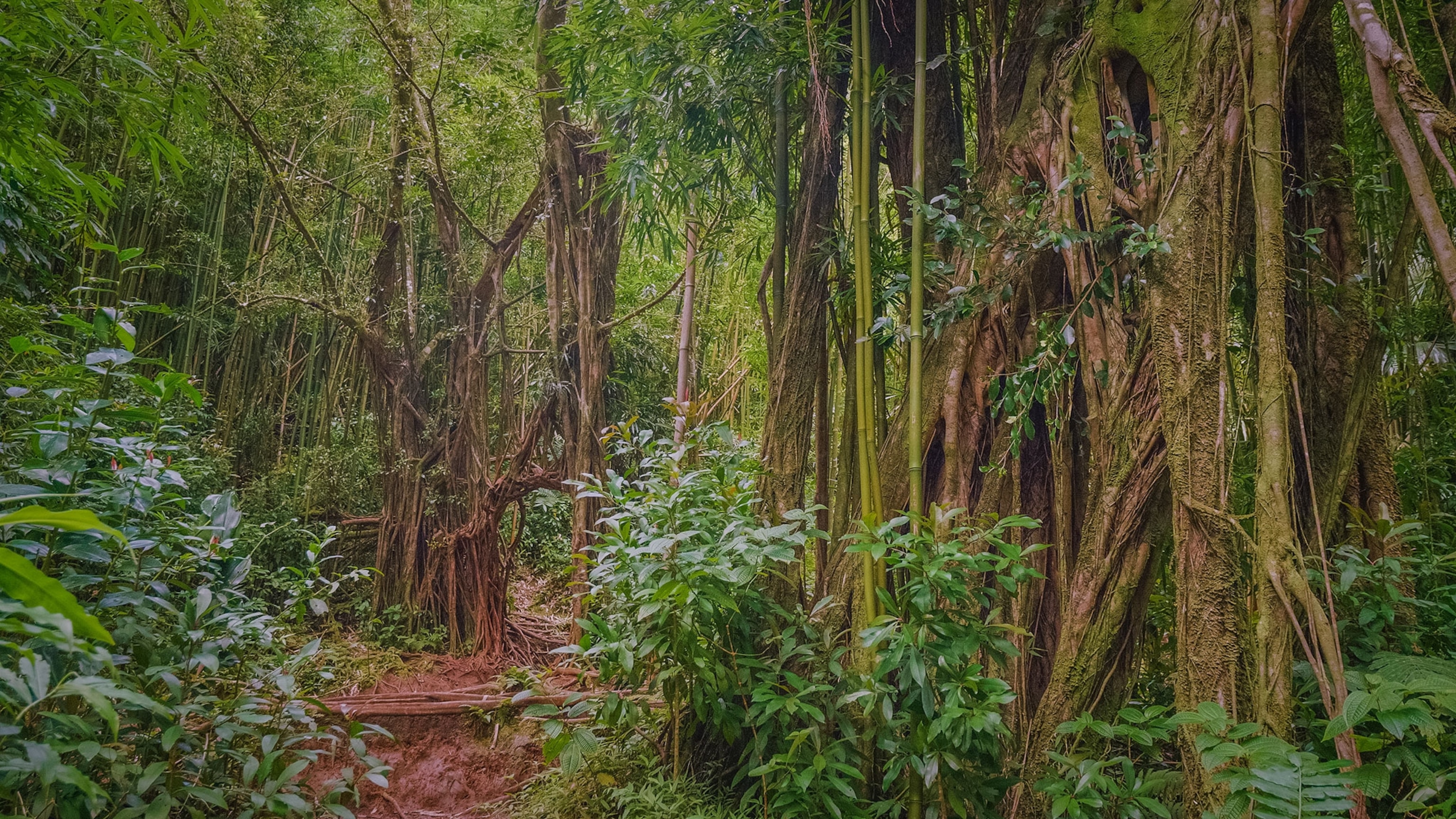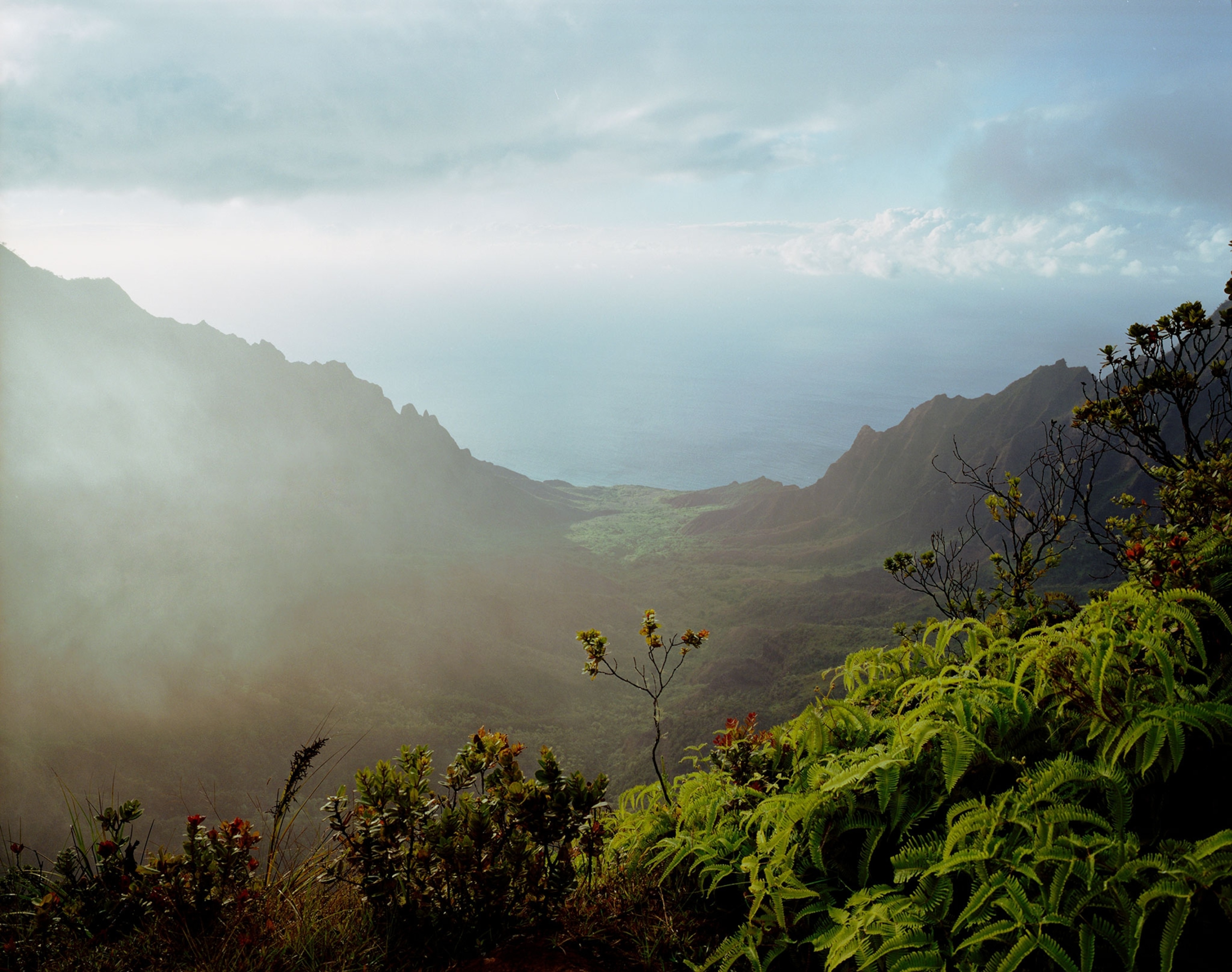Tourists in Hawai‘i are stumbling upon iwi kūpuna—the bones of Native Hawaiians’ ancestors—when they explore beaches like the Puamana Beach Park and rock-climb the seaside and forest cliffs where those remains were laid to rest. A tradition for at least two millennia, these burial sites, which also include sand dunes, are recognized as sacred places for their descendants.
In ʻŌlelo Hawaiʻi (Hawaiian language), “the word for ‘bury’ and the word for ‘plant’—it’s not strange that they’re the same word,” says Mehanaokalā Hind, senior adviser at the Council for Native Hawaiian Advancement. “We plant [the ancestors] back into the spaces that will allow them to return to Papa, return to Haumea,” she adds, referencing two Hawaiian goddesses.
Beaches on Maui, Hawai‘i Island, and Moloka‘i are susceptible to curious visitors digging into their dunes, and Hawai‘i Island, O‘ahu and Kaua‘i are known for their burial caves.
(Traveling to O‘ahu? Plan your trip with these 10 travel tips.)
Mana Kaleilani Cáceres serves as an advocate at Hui Iwi Kuamoʻo, an organization that repatriates and buries iwi kūpuna. During his six-year stint on the O‘ahu Island Burial Council, he fielded countless social media posts that featured tourists interacting with Hawaiian ancestral bones.
“It’s kind of been an issue for all these years,” says Cáceres. “I see it happening more frequently with pictures and videos online.”
Disturbances of iwi kūpuna have occurred for more than a century––and, sometimes, purposefully. Europeans first plundered the bones from the islands to probe and exhibit them, and many still sit in museums around the globe.
Local organizations have made it their kuleana (responsibility) to right these wrongs, with The Hawaiian Church of Hawaiʻi Nei and Hui Iwi Kuamoʻo protecting the bones. Meanwhile, Kānaka Climbers educates nature lovers on how to act as ethical guests. Here’s what you need to know to visit the Hawaiian Islands more respectfully.
(See Hawai‘I hula dancing like you’ve never seen it before.)
Hike state-managed trails like O‘ahu’s Mānoa Falls Trail
Sticking to state-managed trails like the Manoa Falls Trail on Oahu is one way travelers can avoid disturbing sacred sites.
Photograph by Roman Khomlyak/Getty Images
Travelers can avoid encounters with iwi kūpuna and follow state-managed trails that grant tourists ethical access to the outdoors. Unofficial and illegal trails found on websites like AllTrails can take them to unintended places.
At Nuʻuanu Pali State Wayside park on O‘ahu, Cáceres has watched tourists forge their own hiking trails. “You can see that it’s a big problem,” he says.
Kānaka Climbers has flagged certain locations where climbers shouldn’t venture because they could be potential burial sites. “If the local people are informing you not to go to certain spaces, listen to them,” Hind says.
Show hōʻihi (respect) if you hike a historic trail
A number of historic trails are open to public use, and they remain important to Kānaka ʻŌiwi (Native Hawaiians). Some may lead hikers near the rocks that once made up heiau, ancient temples that should be treated with the same reverence as churches. Others skirt past sacred pōhaku (rock). Still, bad behavior happens in these spiritual spaces.

The Ala Kahakai National Historic Trail is a 175-mile network of culturally significant trails.
Photograph by JFerrer, Getty Images
The Hawaiian Church of Hawaiʻi Nei’s ʻIhilani Chu has heard anecdotes about the desecration of heiau, including a man urinating on one. Skye Kolealani Razon-Olds started her nonprofit, Kānaka Climbers, to educate the outdoor recreation community about Hawaiian history and culture after seeing climbers scale a pōhaku that’s also a petroglyph site in southern O‘ahu.
As a keiki (child), “it was where my grandmother would take us to tell us stories about the demigods that lived in the area,” Razon-Olds says. “It’s a great place just to remember that Hawaiian culture is still here, and our community is still very active.”
Travelers should research these trails ahead of time and know what’s expected of visitors.
(Plan a couple’s getaway to the Hawaiian Islands and consider these fun adventures.)
Volunteer with the Mālama Hawaiʻi Program
The Mālama Hawaiʻi Program gives tourists the opportunity to appropriately take part in Hawaiian culture. Volunteers can clean up the coasts in Kaua‘i, plant native species at a Maui wildlife refuge and work outside on a Hawai‘i Island farm near Mauna Kea. As an added bonus, volunteers earn discounts at certain hotels––and, sometimes, a free night’s stay––for their efforts.
“The impact of regenerative tourism is a softer footprint on our ʻāina (land), but also a positive economic impact on Hawai‘i’s families,” Hind at the Council for Native Hawaiian Advancement says.
Use sustainable tour operators
Steer clear of published guidebooks that use buzz words like “secret spaces,” which “tend towards the exotic,” Hind cautions. She explains that these terms use exotification to entice tourists toward places on the islands that are kept private for good reasons. The end result of visiting could fall “on a range from disrespectful to dangerous,” Hind says.
Instead, the Sustainable Tourism Association of Hawaiʻi (STAH) recommends a list of eco-friendly tour operators on O‘ahu, Maui, Kaua‘i, and Hawai‘i Island to escort travelers through parks and attractions. Examples include Holo Holo Charters on Kaua‘i and Valley Isle Excursions on Maui.

With its rugged coastline and mist-covered rainforest, Pihea Trail on Kaua’i is home to an array of native wildlife and vegetation.
Photograph by Diane Cook and Len Jenshel, Nat Geo Image Collection
Visitors can still hike and bike on land or snorkel and dive in the sea, but they’ll follow local guides who are certified in sustainability by the STAH. These tour companies are given the stamp of approval through the Sustainable Tour Operator Certification Program, which requires hours of training, an audit, and the appointment of a sustainability coordinator.
Every year, these operators must recertify to ensure they’re dedicated to providing education about Hawaiian culture, acting as stewards to the islands’ natural resources, and more.
(From authentic Polynesian fare to national parks, here’s what you should know about Maui.)
Don’t geotag hidden gems including burial caves
Tourists who stumble across little-known places on the islands are advised against sharing them on social media, which often leads to overcrowding.
“As social media has grown so much, it’s become easier and easier for people to go to these places,” Razon-Olds at Kānaka Climbers says. “That becomes the new spot everybody searches for, and it kind of invites the wrong people.”
Hui Iwi Kuamoʻo’s Cáceres recalls sealing a burial cave with cement to protect the bones inside. Months later, he saw the mouth of the cave geotagged on social media.
Photos of burial caves and iwi kūpuna are never allowed. It’s kapu (forbidden) to enter the caves—even for Hawaiians. “That’s for their protection,” says Kahu Pohaleo Loko‘olu Quintero, a priest at The Hawaiian Church of Hawaiʻi Nei.
Instead, visitors who come across iwi kūpuna during their time on the islands should call the Hawai‘i Department of Land and Natural Resources Enforcement.
By making small tweaks to their itineraries, tourists can still enjoy Hawaiian lands while respecting and maintaining Indigenous traditions to ensure they last for generations.
(On Kauai, Hawaiians use ancient wisdom to tackle modern challenges.)
Author Megan Ulu-Lani Boyanton identifies as Kanaka ʻŌiwi.
Source link : http://www.bing.com/news/apiclick.aspx?ref=FexRss&aid=&tid=66e1f4a31766422d88c1c4e7ab5482c9&url=https%3A%2F%2Fwww.nationalgeographic.com%2Ftravel%2Farticle%2Fnative-hawaiians-hiking-tips-to-avoid-burial-sites&c=14431360345680125401&mkt=en-us
Author :
Publish date : 2024-09-11 08:30:00
Copyright for syndicated content belongs to the linked Source.






